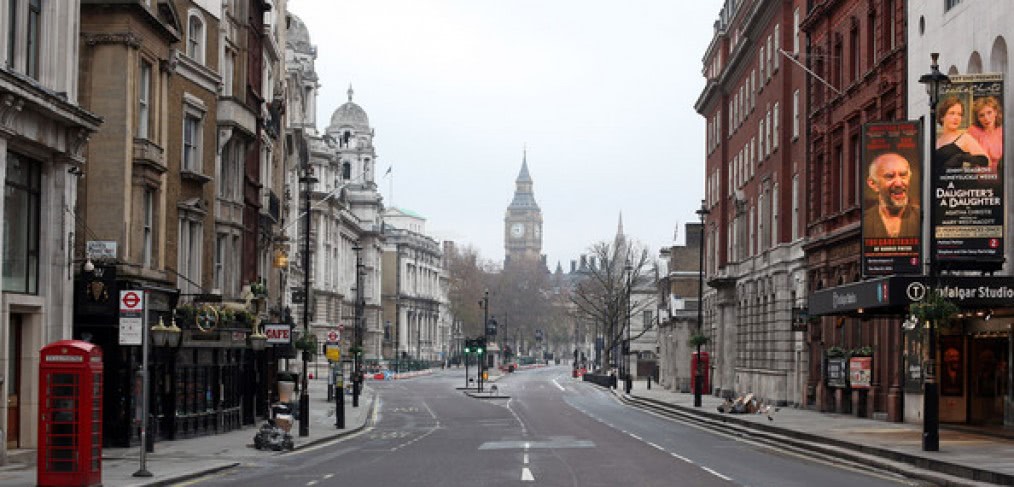
Who will save China’s cities? (Part 1)
Ask urban designer Monica Qing where she’s from and she’ll respond: “China is my country, but London is my home town.” This is the first of her three-part series on why she feels Chinese cities have lost their way—and why places like London suggest a way back.
Two years ago, I went to Shenzhen, widely known as the first city to experiment with the free market in China and the original model for modern Chinese cities. After completing the errands I’d planned to do there, I set off for the airport from the city centre with ample time for my journey, yet hours later, my car sat motionless on traffic-choked Shennan Road, the city’s main thoroughfare. This was the start of many similar experiences I had over the following years in cities around China, and the foundation for a startling and devastating realization: China is plagued with urban sickness, and there is nothing more reflective of that than the poor planning of its urban streets.
Fifteen years ago, most Chinese cities suffered from poor road infrastructure, but today, Chinese people suffer from traffic jams, air pollution and high rate of road death. This change started with Shennan Road, the first of many monster “urban highways” that have swallowed our joy of urban living, our sense of safety and our feeling of belonging.
Of course, in the beginning city leaders imagined a much different reality. When it was built 10 years ago, Shennan Road (also known as South Shenzhen Road) was meant to be Shenzhen’s answer to Regent Street in London, Michigan Avenue in Chicago and Las Ramblas in Barcelona. It was designed to be a wide thoroughfare with a beautiful sub-tropical landscaped median. Driving down it meant gazing at skyscrapers, civic buildings, lush parks and dazzling billboards. No wonder other Chinese city leaders were so impressed, particularly as urbanization was only just on the upswing.
As their own cities grew, these leaders strove to duplicate the majesty of Shennan Road, and they continue to do so today. Ample avenues from thriving manufacturing and the land privatizing process means most city governors can have as many Shennan roads as they want—and this is where the problem lies. Our new districts or cities start with huge over-engineered roads and are then followed by massive gated communities and super blocks. This condition leads to a landscape so barren and an urban experience so dull that people no longer walk in cities and instead retreat to their cars.
[pullquote]“China is plagued with urban sickness, and there is nothing more reflective of that than the poor planning of its urban streets.”[/pullquote]
Recently, I went with a British colleague to Beijing for work. After taking an express train from the airport to the city center, we exited the station onto Beijing’s 2nd ring road, a huge highway type of road designed for fast speed. Although there was a bus stop across the road, we couldn’t cross due to the traffic and lack of access, so we weren’t able to get to it. There was no exit off the road for a taxi to easily get to us, so we stood there, utterly baffled as to how to proceed to our hotel, technically located just two blocks from the station. When we did finally locate a meandering taxi, he recognized an opportunity to charge more for inaccessibility and demanded a fee eight times the normal rate. Choosing to walk instead, we dragged our heavy luggage through perilous traffic and polluted air toward the hotel. I didn’t have the heart to tell my colleague that a block in Beijing is ten times the size of one in New York or London. By the time we arrived at our hotel 30 minutes later, it was clear to both of us: Beijing has lost any sense of pedestrian experience to the cancer of the highways.
Today, the reality is that an entire generation of young Chinese people have no idea what a better city can be, while the older generations are getting used to what our cities have become. Even my fellow Chinese planners have lost perspective. During my visits to China, I have seen bigger roads and bolder, wider lines proudly drawn by urban designers. Every time I present my firm’s master plans to local planners, the response is: “Make your roads wider.” With so much traffic, it must seem like a logical solution.
Yet in China, we already have the widest roads in the world, and these roads (including, most famously, Beijing’s Chang’an Avenue) continue to be the most congested in their cities. Not only that, but they are bringing with them the urban problems of pollution, traffic congestion and road death. The truth is, no matter how wide the roads are, they will never be able to meet the growing demands of traffic. On the other hand, the damage of urban highways to our cities will last forever.
What is the solution? Find out in Part 2 of Monica Qing’s series.
Images (top to bottom): Go London Wikipedia; All other images – Monica Qing



2 comments